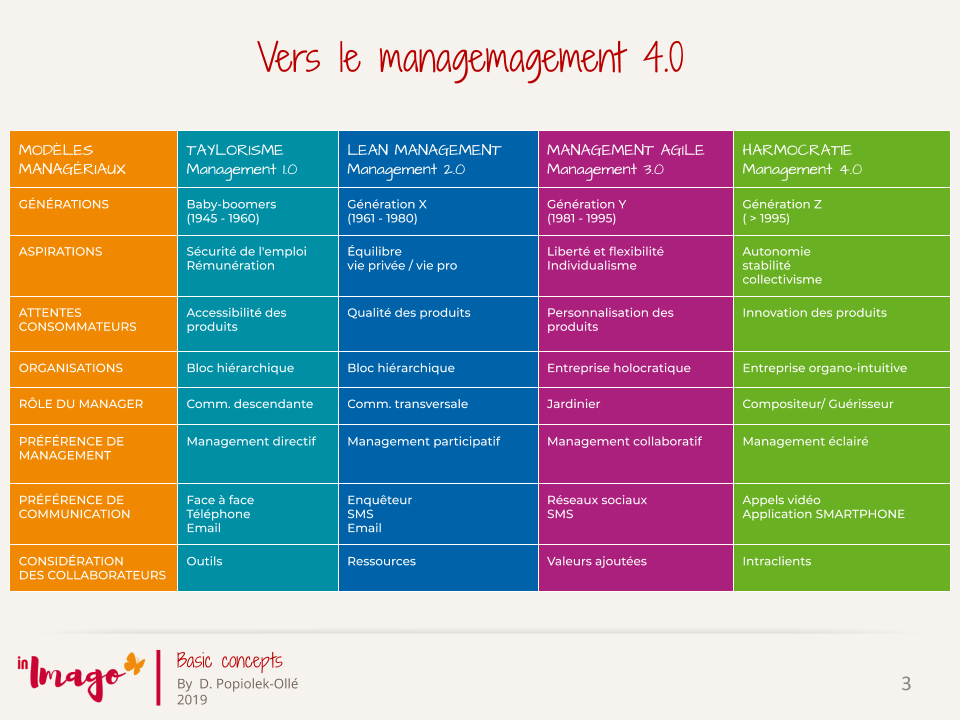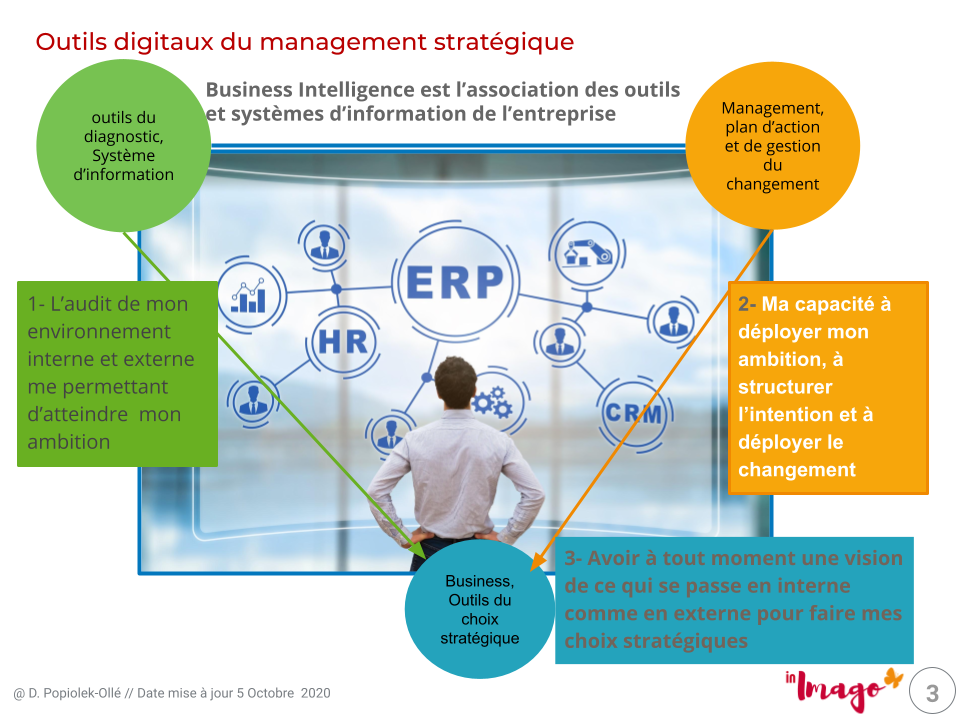Strategic management defines the ambition of the company and brings together all the actions that have an impact on the future of the company.
Based on its understanding of internal and external issues, it establishes a map of its strengths in relation to the operational objective it wishes to achieve, thus defining a medium and long-term strategic plan.
More recently, it has also integrated technology for the good management of the resources necessary for the operational realization of its corporate mission.
The main mission of strategic management is to develop its management, its teams and its corporate culture in order to align the vision and operational intentions with a view to achieving its corporate promise.
Strategic management in the long-term vision of the company integrates the notion of e-reputation and promotes constant dialogue between the brand and the various stakeholders.
Thus, strategic management places the company on the long term, guaranteeing its sustainability. It carries with it the vision, the ambition of the company for the long term.
Strategic management is based
1-internally, on the analysis of the resources and skills available in the company
2- externally, in view of its strengths and weaknesses, identification of its market opportunities and threats.
It is according to these 2 parameters, for example, that the company will launch a new product or buy, for instance, one of its competitors.
Industrialization highlights a need to organize tasks so that activities can flow from one end of the production chain to the other and offer the right product at the right time. Then, in the age of service, the customer comes to the center and wants personalization of what they buy.
Globalization today requires renewal very quickly. Organizational creativity therefore becomes an issue of differentiation for organizations, and even a response to the issue of survival of organizations.
Strategic management drives the company
The decisions taken by strategic management have a direct impact on its cash flow or its reputation. It must now consider the impact of its organization on its speed of adaptation.
To perform its analyzes, decision-makers will need to rely on an efficient information system on which the speed of their decisions may depend.
To do this, it will establish an analysis of its strengths in terms of both resources and technology in order to integrate all the data useful for its decision-making into its dashboards. For this, he will use strategic tools and digital tools. He will cross-reference all the data to make his decisions.
Its strategic plan will have 4 components:
1. Strategic diagnosis: understanding the strategic context. 2. Strategic choices: determining strategic orientations. 3. Strategic deployment: the implementation of the strategy and the management of change. 4- Its resources: in 10 points of resilience
This is why it will develop its management, its teams and its corporate culture in order to align its operational objectives and internal resources.
To achieve its strategic objectives, strategic management delegates execution to operational management.
This operational management has evolved, as we have seen, over time. Moving from directive management to democratic management, thus adapting to the industrial and then digital evolution of the products offered by the company.
A managerial model to invent
Strategic management is carried by a single man, leader or autocratic manager during the industrialization phase, as described below in management 1.0 or 2.0.
Over time, automation strengthens and businesses change to integrate services. Strategic management becomes the bearer of the organization of the future, more adaptable to a complex world changing leadership towards management 3.0, 4.0, X.0 …
We are therefore moving from an autocratic, paternalistic managerial posture whose idea of strategic management was to optimize production, towards an open and lively management that integrates an efficient client-employee culture.
To take into account all the diversity of a business vision in its strategic management, the management model is evolving towards harmonious, organic management, where cooperation promotes intuitive contacts, holistic implementation of products in real time.
The autonomy given to teams can drastically reduce time to market, prompting the organization to review its decision-making process.
We are witnessing the implementation of management without a director. This fundamentally calls into question the way of working, but also forces decision-makers to review their way of thinking about organization and “command”. The diagram shows the evolution of managerial models period by period.

Evolution of managerial styles over time
Complexity of issues
Technological issues are added to human and product issues, adding additional complexity to day-to-day production and management.
In order to integrate the needs, both in terms of the business of a “real time” presence in its markets, and in terms of recruiting resources in search of meaning and autonomy, leadership evolves and is looking for tools to simplify its mission, such as the digital tools offered in the diagram below.

Digital tools and strategic management
Taking the issues into account is essential for decision-makers. This forms the basis of strategic management today. Strategic management is gradually opening up to social networks and confronting the reign of Data. Adding further complexity to the development of its business vision. The decision maker must also ensure the reputation of the company in real time.
The “real time” materializes not only by the e-reputation calculated by powerful logarithms, establishing a ranking of the company by the classification of the data, but also by the capacity of the company to innovate by launching new products. at an increasingly rapid rate. Thus completing the approach to the performance of its teams thanks to adapted and innovative leadership.
Find out about the different aspects of Strategic Management:
Some examples of articles between culture and management
To learn more about the evolution of management over time read, Customer culture is at the heart of Management 3.0
Also discover strategic management in action
Author: Dominique Popiolek-Ollé, Transformational leader, Agile Executive Coach, Founder of In Imago, management consulting and disruptive transformation.

